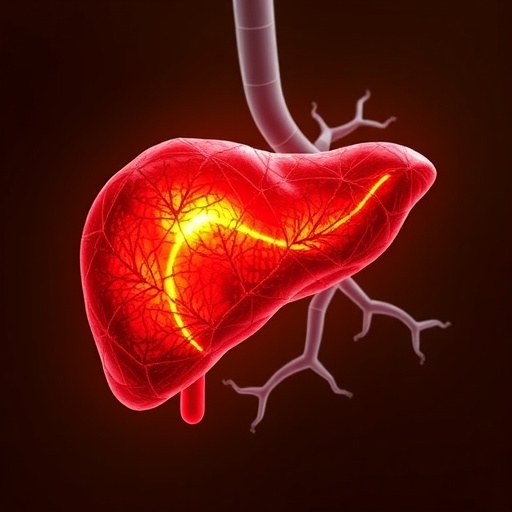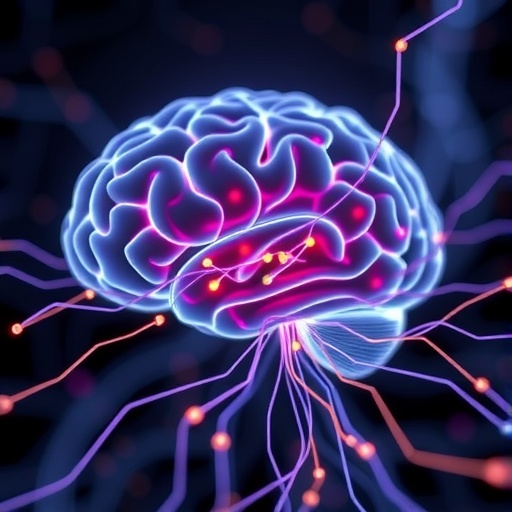
In a groundbreaking study published in Military Medical Research, researchers led by Miao et al. have uncovered the vital role of the motor protein KIF13B in regulating hepatic metabolism. This discovery is set to transform our understanding of metabolic dysfunction-associated fatty liver disease (MAFLD), a condition that affects millions worldwide and poses significant challenges to healthcare systems globally. By elucidating the mechanisms through which KIF13B influences liver function, this research paves the way for novel therapeutic strategies to combat metabolic liver diseases.
The liver is an exceptional organ that performs a wide array of functions essential for maintaining metabolic homeostasis. Among its numerous roles, the liver is central to lipid metabolism, glucose homeostasis, and toxin detoxification. However, disruptions to these functions often lead to various liver diseases, with MAFLD being particularly prevalent. In this context, understanding the underlying molecular mechanisms becomes crucial for developing effective interventions.
KIF13B is a type of kinesin motor protein that plays a critical role in intracellular transport. This protein is known for its ability to transport various cargoes, including organelles and signaling molecules, along microtubules within cells. Previous studies have highlighted KIF13B’s significance in neuronal function and proliferation, but its involvement in liver metabolism had remained largely unexplored until now.
By employing a combination of genetic, biochemical, and physiological approaches, the research team investigated the specific functions of KIF13B in hepatocytes, the primary cells of the liver. Through carefully designed experiments, they demonstrated that KIF13B facilitates the transport of key metabolic enzymes and signaling molecules, which are crucial for maintaining normal hepatic function.
One of the most striking findings of the study is KIF13B’s ability to regulate the localization of pivotal enzymes involved in lipid metabolism. When KIF13B activity was disrupted, the researchers observed a significant alteration in the distribution of these enzymes, leading to impaired lipid processing in hepatocytes. This disruption could result in the accumulation of lipids within liver cells, a hallmark of fatty liver disease.
The team also revealed that KIF13B influences the liver’s response to insulin, a key hormone in glucose metabolism. In their experiments, they found that the disruption of KIF13B led to insulin resistance in hepatocytes, a condition often precursor to type 2 diabetes and metabolic syndrome. This discovery elucidates a critical pathway by which KIF13B exerts its influence over liver metabolism and suggests that enhancing its function might hold therapeutic potential for treating these interconnected metabolic disorders.
Moreover, the research highlighted the interaction between KIF13B and other cellular signaling pathways. The team identified that KIF13B plays a role in the activation of AMP-activated protein kinase (AMPK), a master regulator of energy metabolism. AMPK activation is essential for maintaining energy balance and promotes processes such as fatty acid oxidation while suppressing lipogenesis. Thus, KIF13B’s influence on AMPK signaling provides another layer of complexity to its role in maintaining hepatic metabolism.
These findings have significant implications for understanding MAFLD and metabolic syndrome. Given the increasing prevalence of these conditions associated with lifestyle factors such as obesity and physical inactivity, targeting KIF13B could represent a novel approach to therapeutic development. By restoring the normal function of this motor protein, it may be possible to mitigate the pathogenic processes underlying these diseases.
Furthermore, this discovery could spark interest in the development of KIF13B modulators as a new class of pharmacological agents to combat metabolic dysfunction. Potential therapeutic strategies could involve small molecules designed to enhance KIF13B activity or gene therapy approaches aimed at correcting KIF13B deficiencies in hepatocytes.
The study’s results also prompt further investigation into the broader implications of motor protein functions in other organs and systems. Given the interconnected nature of metabolic processes, exploring the role of KIF13B beyond the liver could yield insights into how motor proteins influence systemic metabolism and contribute to other metabolic disorders.
As the research community absorbs these findings, there is considerable enthusiasm for the potential application of this knowledge in clinical settings. Investigations into the therapeutic targeting of KIF13B could ignite new avenues for treatment and prevention of MAFLD and its associated complications. As the global burden of metabolic diseases continues to rise, such innovative research is vital for developing effective strategies to improve patient outcomes and reduce healthcare costs.
In conclusion, the work of Miao et al. marks a significant advancement in our understanding of the molecular mechanisms underlying hepatic metabolism and the regulation of liver disease. Identifying KIF13B as a key player in this intricate network opens the door to novel therapeutic strategies that could ultimately lead to better management of metabolic dysfunction-associated fatty liver disease, providing hope for millions affected by this debilitating condition.
Subject of Research:
Article Title: Motor protein KIF13B orchestrates hepatic metabolism to prevent metabolic dysfunction-associated fatty liver disease
Article References:
Miao, GL., Zhang, WX., Xu, YT. et al. Motor protein KIF13B orchestrates hepatic metabolism to prevent metabolic dysfunction-associated fatty liver disease.
Military Med Res 12, 11 (2025). https://doi.org/10.1186/s40779-025-00594-3
Image Credits: AI Generated
DOI:
Keywords: KIF13B, hepatic metabolism, motor protein, fatty liver disease, metabolic dysfunction.
Tags: fatty liver disease research advancementsglucose homeostasis in liver healthhepatic metabolic processesintracellular transport mechanismsKIF13B protein functionkinesin motor proteinslipid metabolism in the liverliver disease molecular mechanismsliver metabolism regulationMAFLD treatment strategiesMetabolic dysfunction-associated fatty liver diseasenovel therapeutic approaches for liver disease




